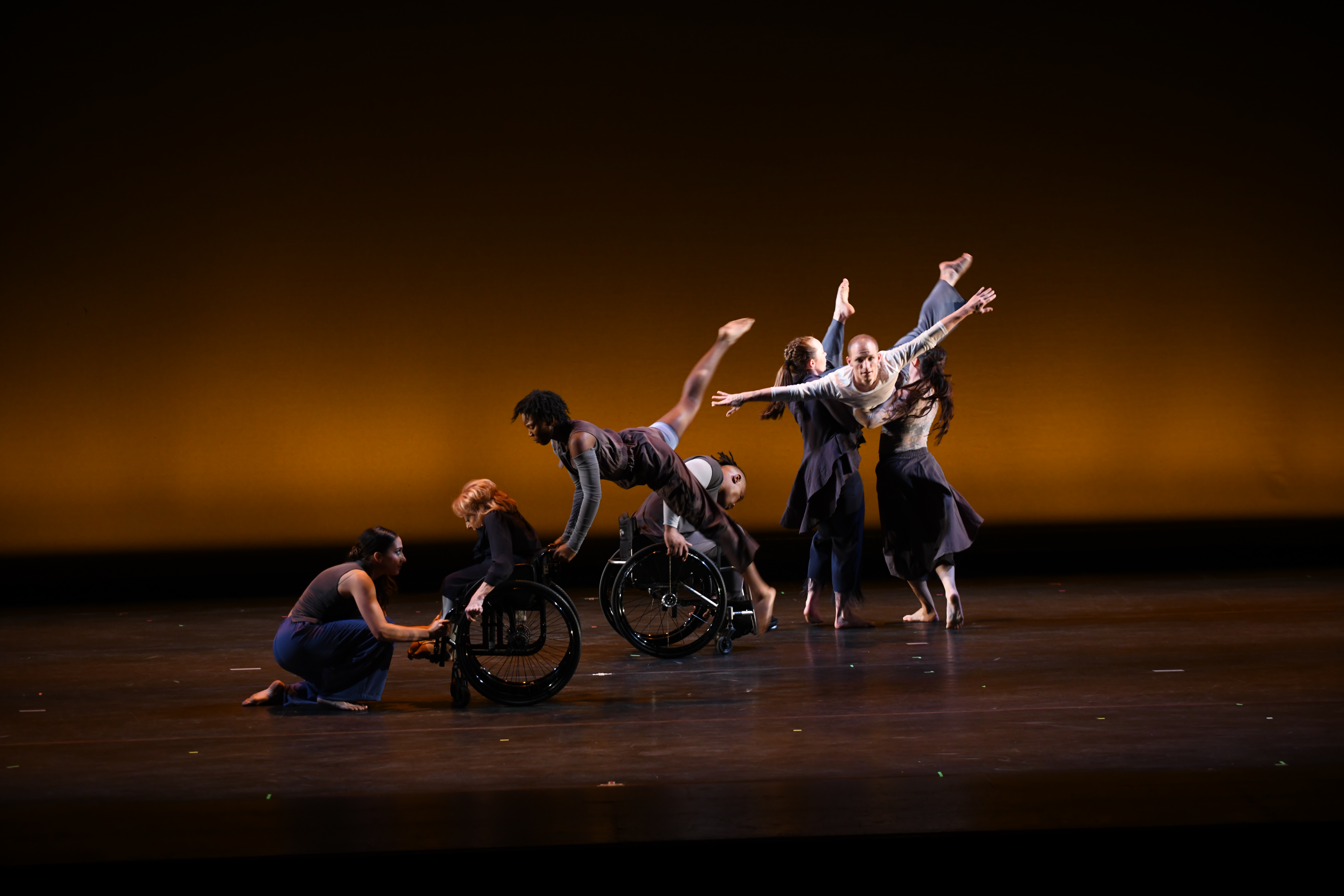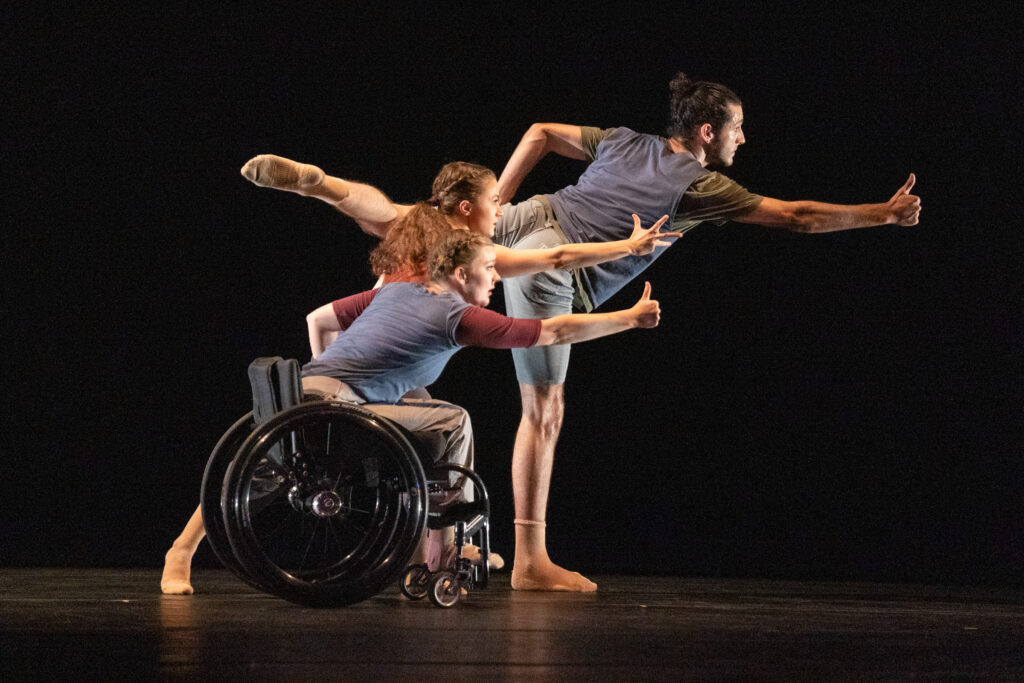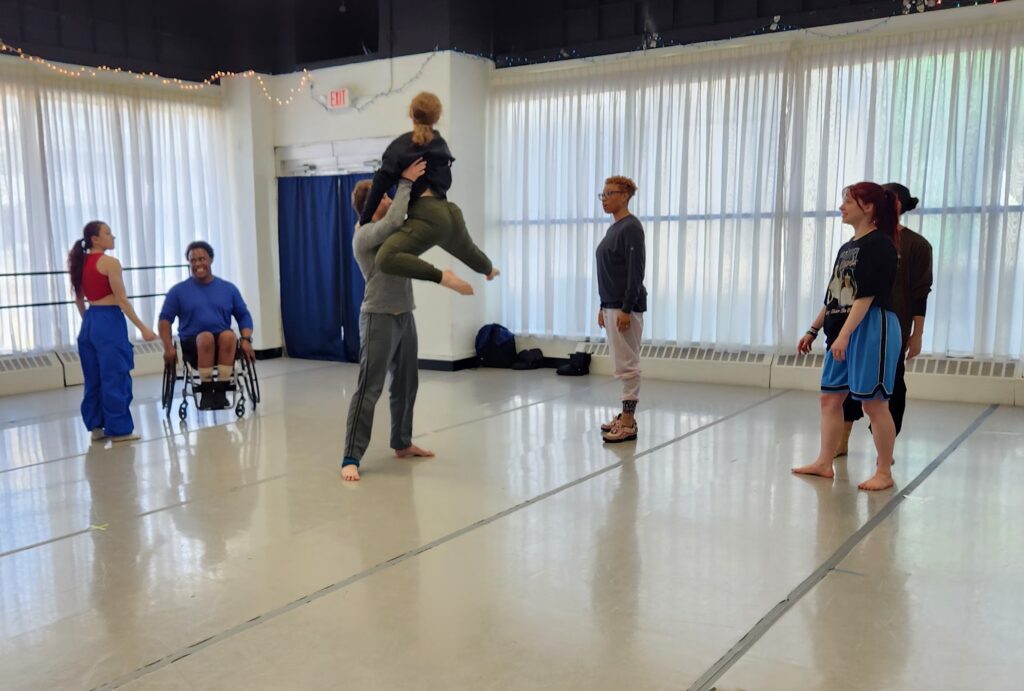In 1942, Agnes de Mille—one of America’s most influential choreographers—premiered Rodeo (pronounced row-DAY-oh). It’s a ballet that explores love, identity, and the social norms of the 19th century American Southwest.
Rodeo plays a pivotal part in ballet history. It helped define “American ballet,” setting it apart from predominant Russian influences of the time. And de Mille’s choreography introduced what she called “storytelling dance,” which transformed everyday gestures like cowboys riding horses or ropers throwing lassos into dance.
Now 80+ years on, Rodeo is being reimagined by Dancing Wheels, the nation’s first physically integrated dance company. Founded in 1980 and based in Cleveland, Ohio, the international touring group consists of 10 full-time professional dancers, with and without disabilities, from diverse dance backgrounds.

Mary Verdi-Fletcher, Dancing Wheels’ president and founding artistic director, says that she’s loved Rodeo ever since she first saw it staged by Cleveland Ballet in the ’80s. The vibrant movement and storyline, and de Mille’s approach to dance all resonated with her.
“I really wanted to do Rodeo for years, but it wasn’t possible [for Dancing Wheels] to do the actual movement … the choreography at the time. So, I thought, “Why don’t we reimagine it, modernize it, put it in today’s mindset where inclusion is so important in dance,” she elaborates.
Verdi-Fletcher says Dancing Wheel’s version of Rodeo represents a major milestone: It’s the first time a major ballet “master work” has been recreated to be physically integrated. “We’re pretty noted for taking on bigger projects,” she shares.

A Collaborative Transformation
Rodeo Reimagined incorporates different genres of dance, all to meet the expertise and experience of sit-down dancers in wheelchairs and stand-up dancers. It’s also being reenvisioned in other ways: a reworked score, a slightly different storyline, new costumes, and fewer cast members than the original.
To pull it off, Dancing Wheels collaborated with Cleveland Jazz Orchestra’s Paul Ferguson for the score and leading New York-based choreographer and director Amy Hall Garner.
“This has been a different process for me because we are telling a story. So, I have to make sure that stays in the forefront of all the movement,” says Garner, whose recent works lean non-narrative or abstract. “It’s really opening my creative voice in a different way and making sure that everything is clear and comfortable, and cohesive and precise.”



And how long did they have to create Rodeo Reimagined? Just two weeks and three days of intensive in-person choreography with Garner, plus a handful of rehearsals!
She says her time with Dancing Wheels has been a gift “because you get so used to working in the vocabulary that you normally work in … It really is cool for me to figure out new ways of moving and consideration.”
This interpretation of the historic American ballet will premiere on June 14 at Dancing Wheels’ annual benefit gala.
Dancing Wheels’ production of Rodeo Reimagined is supported in part by Arts Midwest’s GIG Fund. The GIG Fund provides flexible grants for nonprofit organizations to support programs and activities featuring professional artists.
